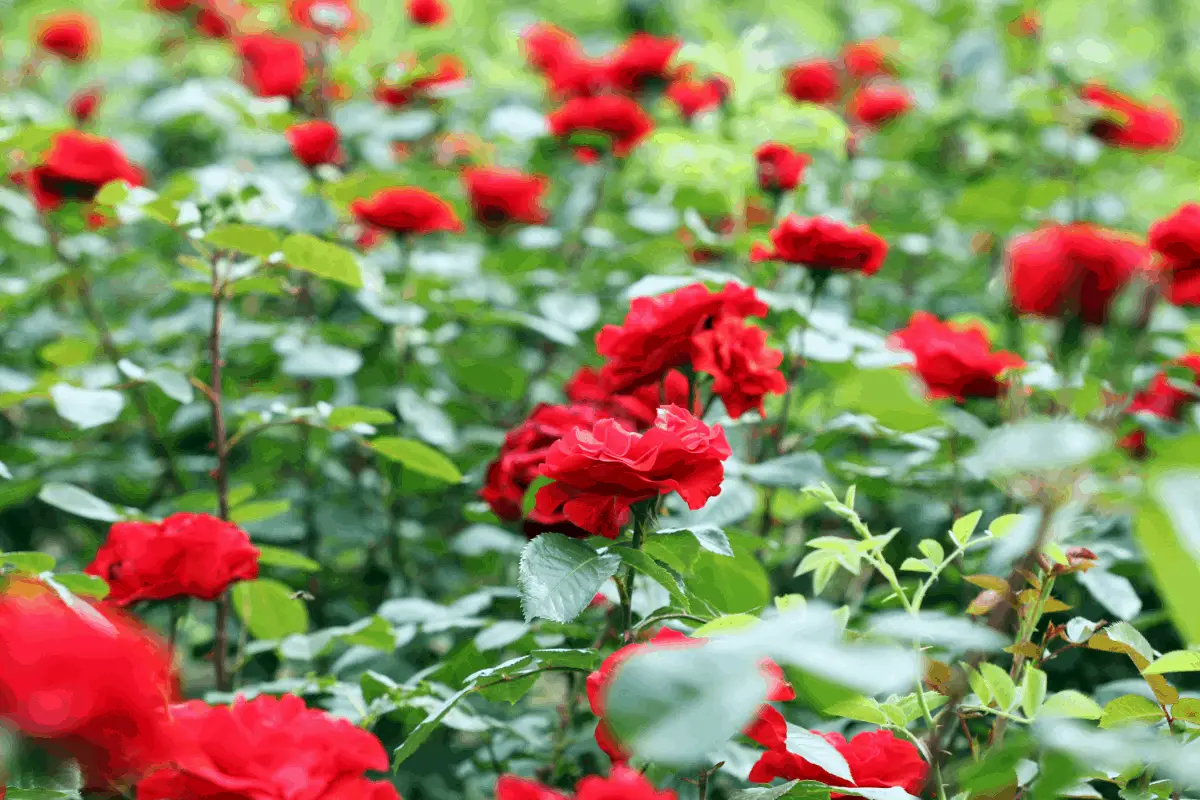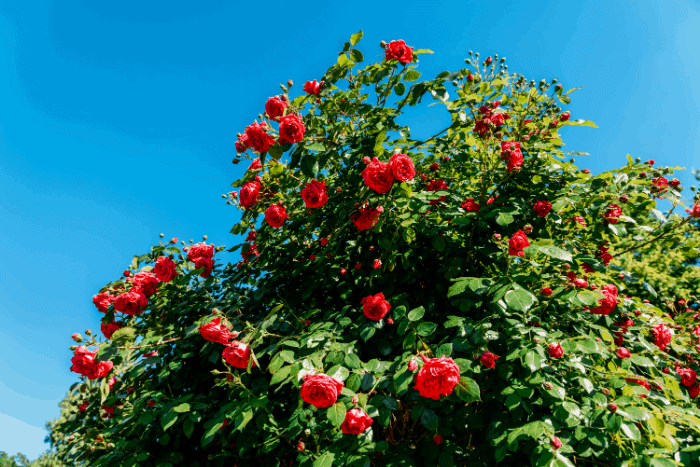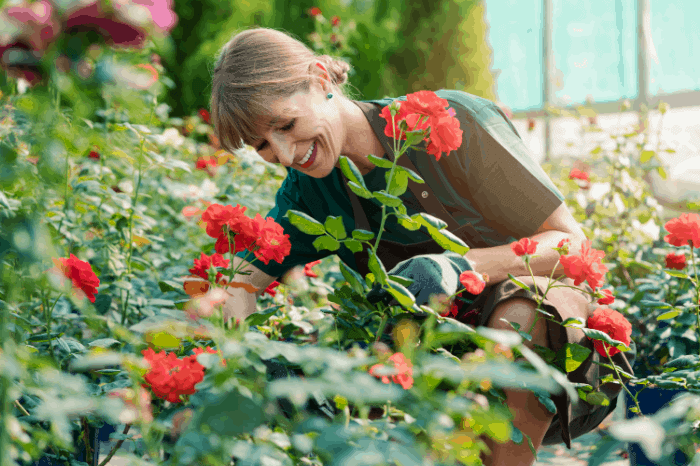Last Updated on June 17, 2020 by Charlie
While the blooms are always beautiful, many often struggle with the question: When is the best time to plant roses?
And as an avid gardener who planted just about every variety of rose, I’ve discovered some shocking similarities in rose care, that could make caring for these normally finicky plants an easy journey.
And, because I know how a lot of people still struggle with planting and caring for these wonderful flowers, I’ve compiled some of the best tips and tricks I know, to get the best blooms through a couple of simple steps. All you have to do is follow these instructions, and you’d be up to making the best rose plantain of your life!
When is the Best Time to Plant Roses
Given that roses are a tricky set of flowers to plant, which multiple times of the year which might be suitable for planting them if you want the simplest and best season to do so, start planting them during the spring.
This is important because spring provides a wide array of benefits to rose plants. Firstly, during the spring season, the plant will have the maximum time possible to establish its roots and develop resilience before the cold winter months appear.
Secondly, there will be a great deal of sunlight, and roses need at least six hours of daily sunlight when they are young to maximize growth.
Thirdly, the air will be warm and humid, and the soil will have nutrients from the previous leaf falls and plant decomposition, giving the roses a fighting chance to remain healthy and strong. This is crucial because roses are finicky and many fertilizers and mulches. will not be good for their growth, as they can poison the buds before they bloom.
Best Time to Plant Roses: What to Plant and Where to Plant
There is no single, monolithic rose plant. Instead, there are multiple categories with dozens if not hundreds of subtypes describing each rose that grows in a variety of environments. The categories of rose include:
- Hybrid Tea Rose
- Shrub Rose
- Climbing Rose
- Tree Rose
- Miniature Roses
- Grandiflora
- Floribunda
And while each of these rose types are unique, they all possess similarities about where they should be planted. By nature, the flower requires maximum sunlight exposure, loose but nutritious soil, and a place in hardiness zones 5, 6, 7, 8, or 9. This means they grow best in temperature climates with warm summers but not a tropical or subtropical environment.
Best Time to Plant Hybrid Tea Rose
The hybrid tea rose is perhaps the most popular variety because it possesses large blooms at the end of the long stems and is the most common rose seen in flower shops, thanks to their lovely bouquets. In addition, they can grow just about anywhere, so get creative!
Shrub Roses
The shrub roses produce blooms in large clusters. These plants are best for large yards because they love to sprawl, and can cover between 5 and 15 ft. above ground level.
Climbing Roses
The climbing rose is a style of plant that grows up over arbors, fences, and walls, with thin vines. As a result, they produce small clusters of blooms and often need a constant and consistent pruning effort to prevent overgrowth.
Tree Roses
The tree rose is a literal tree that grows roses, thus, it often needs a location where the roots will have room to develop and spread. So while planting it, make sure it won’t have to fight with other flowers or wind up spending too much time in the shade.
Miniature Roses
Miniature roses are small and compact. They grow best when placed in pots that can be moved around to get the maximum amount of sunlight possible. However, these bushes quickly grow large and might need to be transferred to a new location where they have room for the roots to spread.
Grandiflora Roses
The Grandiflora roses are hybrids that can produce clusters of blooms as well as single flowers at the end of long stems. These bushes can grow to be 6 ft. tall, and work well when kept away from other plants that might be swallowed up by the new growth.
Floribunda Roses
The Floribunda roses look like small bushes with beautiful blooms, that grow well in compact spaces. If you have a little extra space in your garden, floribunda will develop with little trouble.
So in all, where to plant your roses will depend on which variety you choose. However, no matter which style you pick, be sure to choose a spot that has adequate sunlight, loose soil, and enough room for the roots to grow because it’s far too easy, for the roots to be smothered by the growth from other plants.
Best Time to Plant Roses: Preparation and Planting
If you’re planning on planting bare root roses, soak the roots in water for 2-24 hours. Thereafter, dig a planting hole that is 12-18 inches deep and wide, and then place the plant with its soaked roots inside. And make sure the bud union is 1-2 inches above the dirt. When that is done, carefully pack the soil around the base, leaving it loose enough to accept water without growing stagnant.
If you plant bulbs, dig a hole that 6-8 inches deep, place the rose bulb inside, and then loosely cover it with soil. After doing that, water the bulb up to an extent that the soil is thoroughly soaked, but still has some room for drainage. If possible, apply a fertilizer rich in potassium and nitrogen to facilitate its growth.
Here a video showing how to choose the best cuttings to propagate roses:
To propagate roses from cuttings, probably you will need a Root Stimulator, you may try Garden Safe Rooting Hormone
Best Time to Plant Roses: How to Care for Roses
Watering
Caring for planted roses requires due diligence, especially when it comes to watering, soil upkeep, and maintaining the proper environment for the buds. No matter the type of rose planted, the flowers will require watering at least twice a week, especially in hot and dry climates. Also, the roses need to be thoroughly soaked, so that the liquid will seep through the dirt and reach the roots.
However, you don’t have to water it too much. If you live in a wet climate, check the soil around the roses before adding more liquid. If the soil remains damp and doesn’t dry out, wait. You only need to water when the soil becomes hard and dry.
Soil
Thereafter, you need to maintain the soil so that the rose will have an easy time growing. The ideal soil for roses is the loose and dry ones, which helps in draining excess water. Also, make sure the soil contains nutrients like potassium, nitrogen, and phosphorous so that the roses can get the nutrition they need.
Fertilizers
When it comes to feeding roses, avoid artificial fertilizers. Multiple varieties can actually attract more pests such as aphids, which will eat the roses in a heartbeat. Instead, try using natural compost and fertilizers like fruit and vegetable peels to keep the soil healthy.
If you’re struggling to find a good compost, try banana peels and a cup of Epsom salts, which both have potassium and magnesium to encourage the rose’s growth. If this is still too difficult, invest in a granular fertilizer and apply a cup loosely around the rose bush, once a month during the summer.
Read about How to get rid of Japanese beetles on roses.
Conclusion
While there are a wide variety of roses, the best time and place to plant them is always the same. Although they can be finicky, you will have an easy time growing some beautiful blooms if you follow the above simple instructions.
Choose a location with adequate space for the roots to grow. Plant the roses in an area where they will receive at least six hours of sunlight, and keep the soil loosely packed so that there will be an adequate drainage system. Use a natural fertilizer like compost to keep the dirt rich with nutrients for the buds.
I hope you liked this piece. If you did, feel free to comment or ask questions about the best time and place to plant roses. Happy planting!
Tony Manhart is a passionate gardener who has been tending to gardens for over 20 years. He takes pride in creating beautiful outdoor spaces with plants, trees, and shrubs that can thrive in any environment. He loves to share his knowledge with others and has taught classes on gardening basics and advanced techniques. He is committed to sustainability, using natural and organic methods to create and maintain gardens. He also works with local organizations to create green spaces for communities. When he’s not gardening, Tony enjoys hiking, reading, and spending time with his family.






